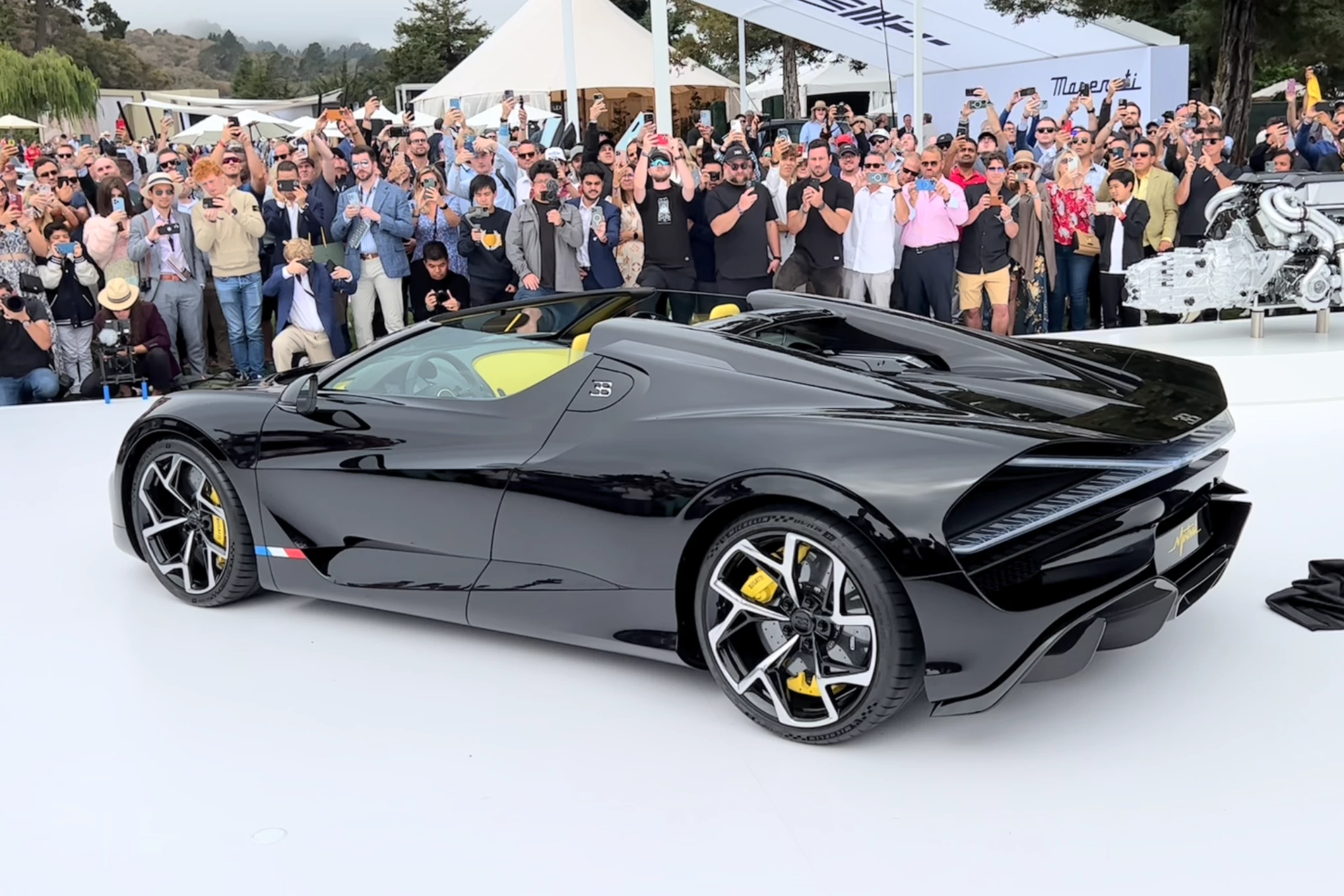Car Week 2022 has officially swept its way over Northern California's Monterey Peninsula, leaving behind a treasure trove of new high-powered concept and production cars. It's always a special event, but the past two years have felt even more intense owing to the leaner automotive calendars leading up to August. With the absence of the Geneva Motor Show, in particular, it feels like automakers and designers are saving the year's best exotics for the rugged sands of Pebble Beach and fairytale-green lawn of The Quail, A Motorsports Gathering. The 2022 event was most definitely the year's most impressive gathering of overindulgent hypercars, wild-eyed concepts, and gorgeous restomods and revivals.
This year's debuts included two of the fastest convertibles to ever put rubber down on Planet Earth, a true back-from-the-past Back to the Future spectacle, a beautiful all-electric Meyers Manx revival, a video game McLaren turned reality, and the most extreme version of an already extreme electric super-sedan. Here are a few of the other new surprises that made this year's show one that won't soon be forgotten.
Porsche makes the road racier

Porsche's stripped-down, race-derived 911 GT3 RS models have been moving in a more flamboyant direction in recent years, and the latest definitely continues the trend. With a massive rear wing that stands higher than the roof for the first time in Porsche production history, flared nostrils that look ready to snort fire at unfortunate bystanders, and bright-green accents that make up the customized premiere car, the all-new 911 GT3 RS could have all but debuted in Germany and still been seen in Monterey.
Motorsport courses through the GT3 RS' every duct, wire and pipe, starting with the race-derived single-throttle intake system and rigid valvetrain of the naturally aspirated 4.0-liter six-cylinder engine. With help from the specially ventilated PDK transmission with shortened gear ratio, that power plant sends out up to 518 hp to the rotary dial-adjustable rear differential. The rebound and compression damping at the front and rear axles can also be adjusted individually, letting the driver dial things in exactly how they prefer.
The biggest part of the GT3 RS story, though, is, rather obviously, the extensive cooling and aerodynamics kit trickled down from the 911 GT3 R race car. The car's large hood vents breathe outward from the angled, centralized radiator that takes up what's usually a front luggage compartment, a design that frees space on the sides for the continuously adjustable wing elements that help develop up to nearly 1,900 lb (862 kg) of downforce (at 177 mph/285 km/h). A special drag reduction system (DRS), meanwhile, flattens the adjustable wings at the push of a button to cut drag and keep the GT3 RS screaming through straight, fast sections.
All that motorsport-mimicking trickery doesn't come without its price; the car will start at US$223,800 before destination fee when it lands in US dealerships in spring 2023.
Koenigsegg celebrates 20 (and 50) years

It's been nearly 30 years since Christian von Koenigsegg set out to create the world's greatest supercars in 1994, but it understandably took a little time to get the first of those cars off the ground. The original Koenigsegg CC8S launched in 2002, kicking off an illustrious string of world records by sporting the world's most powerful production engine at the time (a record Koenigsegg soon broke itself). To celebrate the car's 20th birthday, Koenigsegg reimagined the car into the CC850, a sleeker, more modernized hypercar that reflects how far the Swedish namesake brand has come.
Koenigseggs have never hit us as the prettiest supercars out there, and that was especially true back in the early days of broad, flat body panels and crisp edges. Koenigsegg doesn't completely abandon that past in remembering it, tying the CC850's styling closely to the original CC8S design language while smoothening it out with more rounded edges and surfaces, updated front and rear lighting, and a more intricately styled set of rotary-dial wheels.
The real magic happens under the bodywork, though, where Koenigsegg gives the CC850 its signature 1:1 power/weight ratio with a 5.0-liter twin-turbo V8 that runs flywheel-free to put out up to 1,385 hp (running E85) to match the car's 1,385-kg (3,053-lb) curb weight. That engine works in tandem with the all-new Engage Shift System. Paired with a clutch pedal, the ESS transmission can run as an adaptable, multi-ratio six-speed manual with specially built gated shifter. Drivers can also set the ESS to automatic, wrap both hands firmly around the wheel, and let the smooth-shifting nine-speed auto function take care of gear selection.
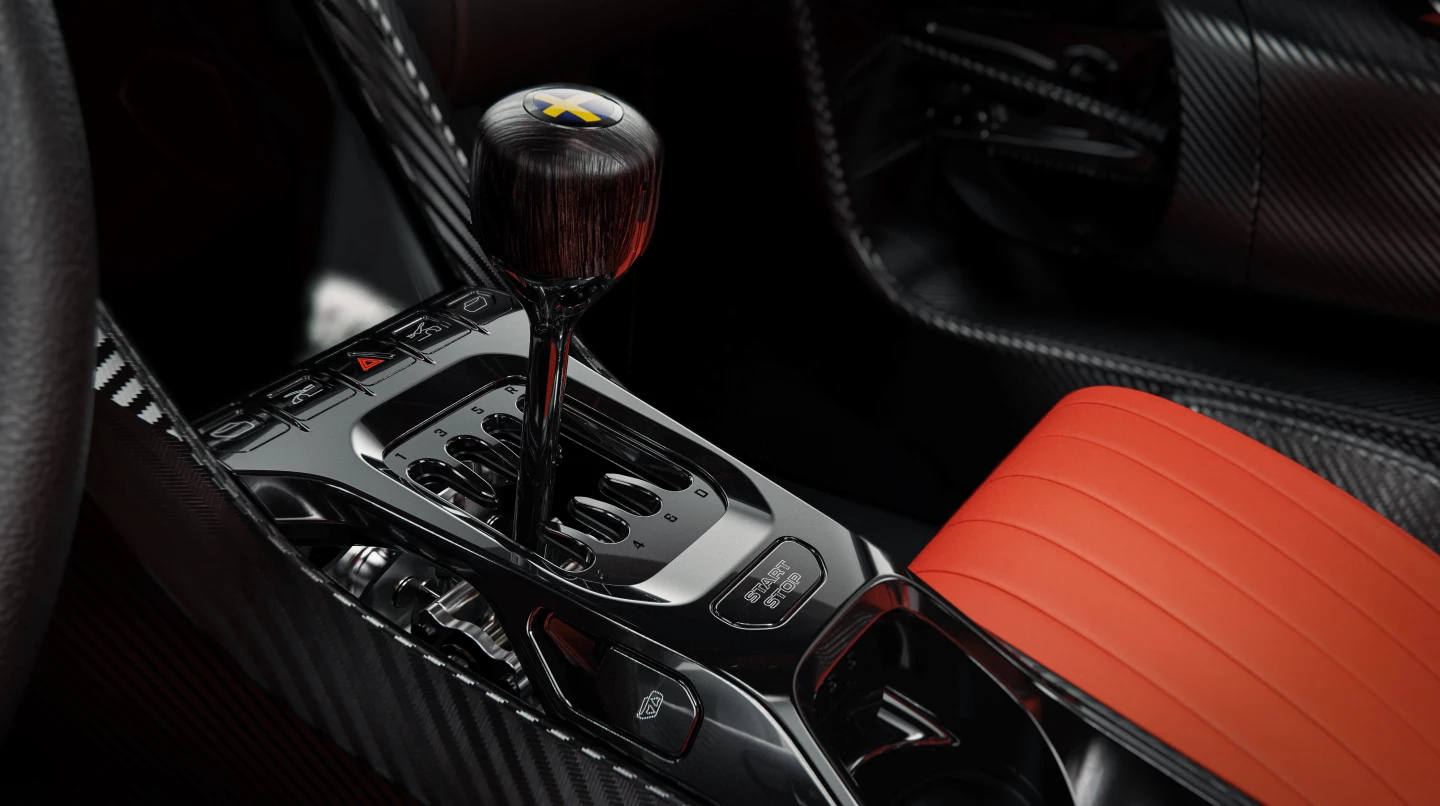
The CC850 won't follow the CC8S down the world record-chasing road, Koenigsegg makes clear, explaining that the homage car won't look to outdo modern contemporaries like the Jesko Absolut or Regera. Koenigsegg will build just 50 examples of the CC850 in honor of Christian's 50th birthday this year.
Czinger 3D-prints its way toward all-out speed
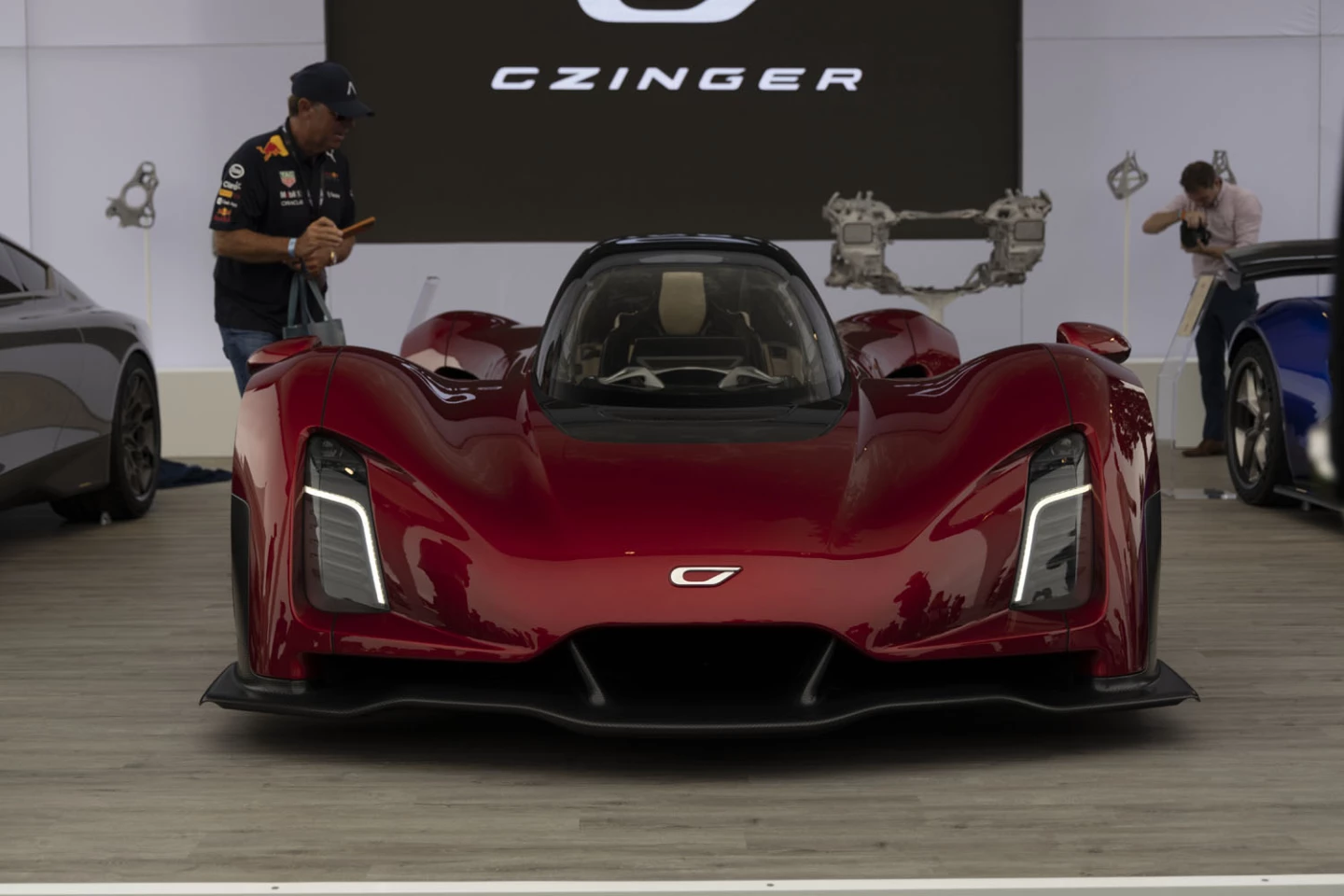
We've already looked into the 3D-printed chassis and power-dense 2.9-liter V8 twin-turbo-equipped 1,250-hp hybrid drive that make the Czinger 21C a hypercar quite unlike the others. At The Quail, Czinger spun off a 21C that promises to be even faster. The 21C V Max's body has been sleeked and slipped to reduce drag and increase performance on everything from 0-60 mph (96.5 km/h), to quarter-mile to top speed. Czinger mentions 0-250-0-mph (0-400-0 km/h) time as one of its benchmarking targets, revealing that the V Max will be able to go at least 250 mph. It doesn't hint at how the acceleration numbers will break down, but given that the 21C comes tagged with a 1.9-second 0-62 mph (100 km/h) sprint estimate, the V Max looks poised to push into absolute top-of-world territory.
Czinger plans to begin delivery of both 21C and 21C V Max models by late 2023. It also teased a Hyper GT while in Pebble Beach, some soon-to-be competition for the Koenigsegg Gemera (which was also at the show). The Hyper GT will seat four people "without sacrifice to performance," another hypercar option for shuttling the family around at world-record speeds and in seven-figure luxury. It doesn't look quite so extreme and motorsporty as the tandem-seat 21C, but the four-seater design is still a work in progress.
RUF masters mountains with airy Bergmeister
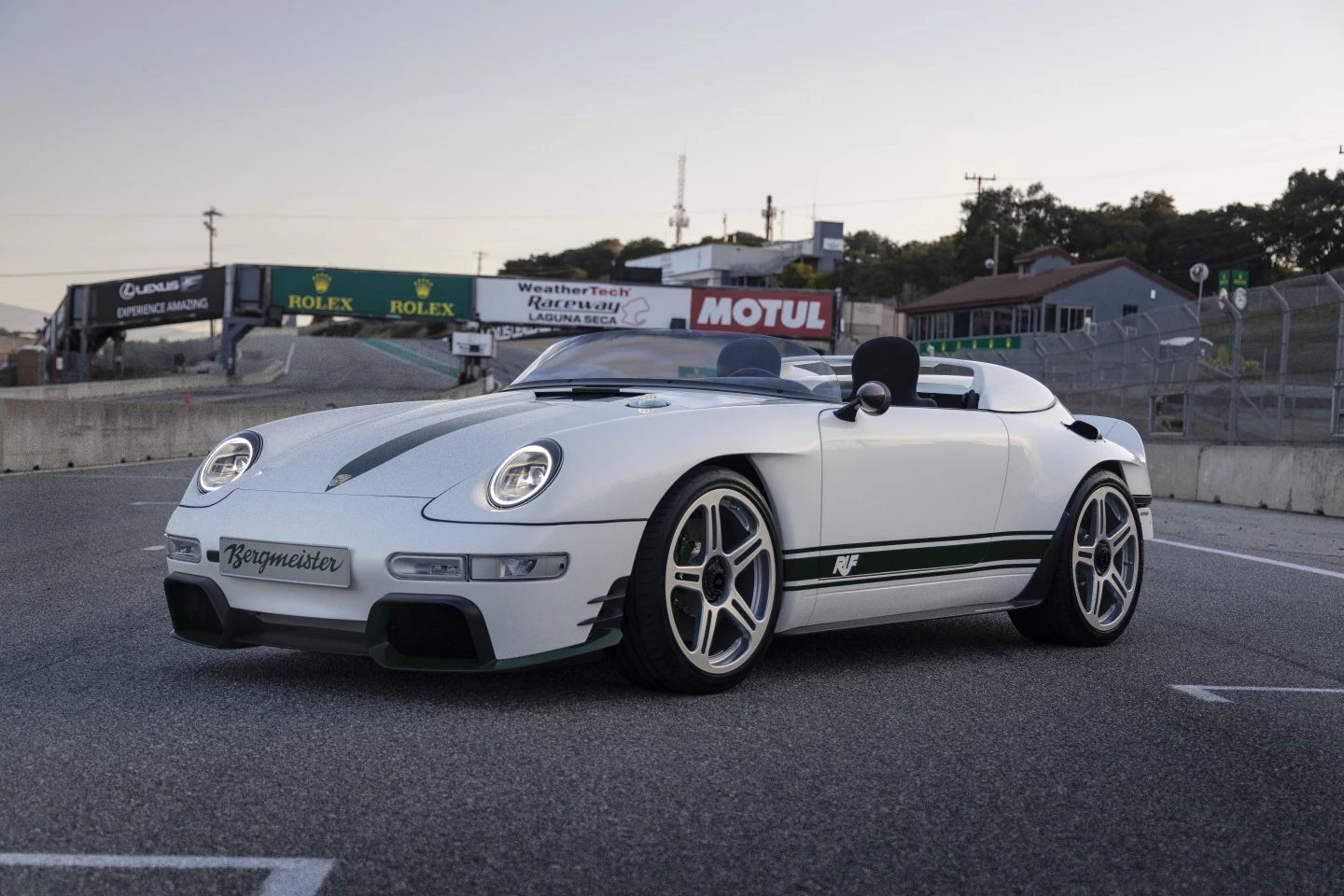
Quite possibly the most striking Porsche at a show with some incredible examples, the all-new Bergmeister prototype from high-performance Porsche manufacturer RUF Automobile is a mini-windscreened hillclimbing speedster with sleek, aero look quite different from the average 993 911. Inspired by Ferdinand Porsche's very own hill-climbing auto unions in the 1930s and later hillclimb race cars like the 906, 909 Bergspyder and 718 RS 60 Spyder, the Porsche 993-based Bergmeister wears a sleek, open carbon fiber skin that tapers neatly into a unique double-ducktail rear-end. The speedster lights up the mountain or highway ahead with RUF LED headlights. And if it weren't for the Aston Martin DBR22, it might have boasted the smallest, cutest windshield in all of Pebble Beach.
Bergmeister power comes from RUF's air-cooled 3.6-liter flat-six turbo mounted in the rear, which routes up to 450 bhp and 442 lb-ft (599 Nm) of torque through a six-speed manual transmission. Meanwhile, the driver enjoys precise direct steering from the comfort of the soft Alcantara-trimmed steering wheel.
We'll see if and when RUF turns the Bergmeister from prototype to available model.
Kia democratizes Lambo-besting performance inside the seven-figure hypercar bubble
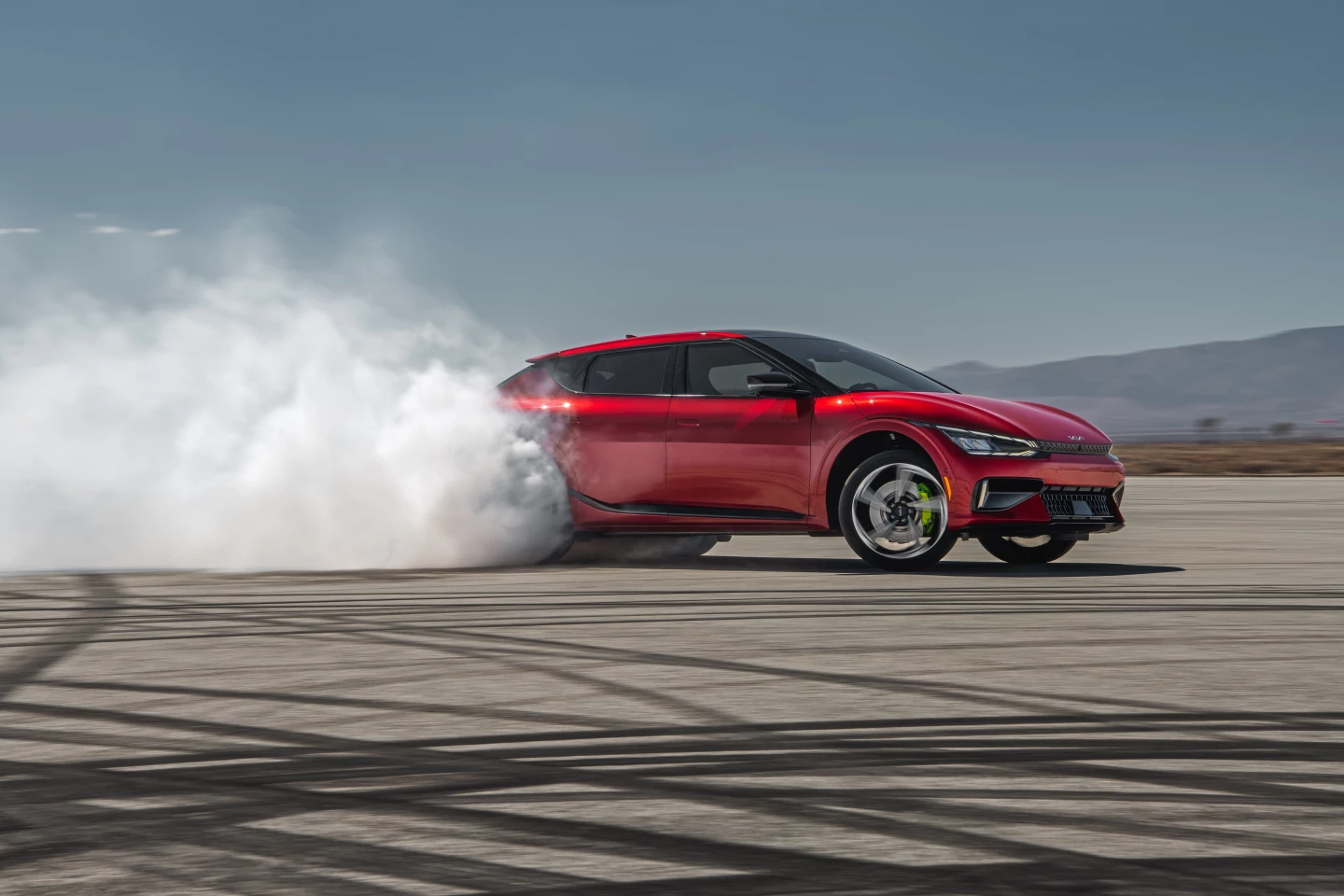
Monterey is very much an automotive event aimed at filthy rich performance enthusiasts and classic car connoisseurs, and very much not at average everyday drivers. So it was nice to see a car that someone short of a tech industry titan or savvy venture capitalist could afford, particularly one that's much more than a pedestrian SUV or sedan, an electric hot hatch that boasts beating a Lamborghini Huracan Evo and Ferrari Roma in a drag race among its accomplishments (in independent ACMI testing, according to Kia).
Kia already announced the 576-hp GT trim at the EV6 world premiere last year, but the car's North American debut didn't officially happen until The Quail last Friday. The electrified performance crossover uses its 77.4-kWh battery-powered 430-kW front/rear motor setup for a 0-60-mph sprint time of 3.4 seconds and a top speed of 161 mph (259 kmk/h). It also includes a Drift Mode that optimizes the motors, braking, steering, suspension, electronic limited-slip differential and electronic stability to unleash asphalt-scarring, smoke-spitting performance at the push of a button.
Unlike the other cars on this list, the EV6 GT does all that while offering a practical, efficient means of taking the kids to basketball practice or picking up groceries. Its 206 miles (332 km) of estimated range is a far cry from the up to 310 EPA-estimated miles (499 km) the base EV6 offers, but the GT does share its 18-minute (to 80 percent battery capacity) 800-V fast-charging capabilities with its less-powerful stablemate, making it convenient to power up and get back on the road.
Kia will launch the EV6 GT in the US in the fourth quarter of 2022, and while it has not yet announced pricing, we're confident it will fall far, far below the seven- and high-six-figure price tags so common across the lawn, pavilions and sands of Pebble Beach.
See more of the high-performance supercars and forward-looking concept cars in our full gallery from the debut-packed weekend.














































